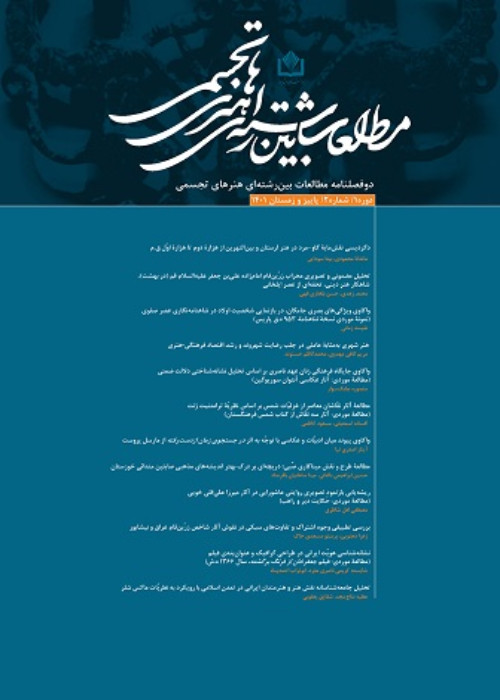Narrative analysis of depiction of Sassanid metal vessels based on written texts of this period
Sasanian art is an original and progressive art that includes a coherent set of images in different scales, from depictions on stone reliefs to depictions of small and large metal vessels in various forms. In the metal containers of this period, various depictions including different themes and traditions are manifested. Many studies have been done on these dishes, but the narrative field of depiction in them has not been studied so far. However, the narratives depicted on the metal vessels of this period are very important from the literary, historical and religious point of view and provide important and practical documents in describing the cultural, religious and historical conditions of that period. Therefore, with a new look, these questions are raised that what narratives and themes do the depictions in Sassanian metal containers contain? And what is the relationship between these traditions and the literary, historical and religious texts of the Sassanian period? Also, investigating the traditions and themes engraved on Sassanian metal vessels and discovering the traditions hidden in them is the aim of this research. The research method is descriptive-analytical and the method of collecting library information. By placing the illustrations on the metal vessels of this period in three categories of literary narratives and themes, historical narratives and themes, and religious narratives and themes and analyzing the findings from it, it can be said that the literary narratives and themes in works such as the story of Bahram and Azadeh, Tree Asurig, Yadgar Zariran and Panche Tantre have been considered in depicting literary themes on Sassanid metal vessels Also, the narratives of bravery and warfare of the Sassanid kings can be seen both in books such as Ardeshir Babakan's workbook and in the metal vessels of this period in the form of illustrations of the hunting and bravery narratives of the Sassanian kings. Finally, the narratives and religious themes in the book of Avesta and Bandheshen have been taken into consideration in the illustration of Sassanian metal vessels, including the illustration of the narratives related to the goddesses and their supernatural powers, the story of creation and other religious topics.
-
Reflection of Religious and Cultural Beliefs of the Safavid Era in the Symbolism of the Paintings of Ibrahim Mirza’s Haft Awrang (with Emphasis on the Two Stories "Yusuf and Zuleykha" and "Leily and Majnoon")
*, Farzaneh Farrokhfar, Saba Fadavi
Negareh journal, -
Harpy or Homay?Analysis of the emergence of the role of the harpy in Iranian and Turkish art based on Turkish mythology
*, Hashem Hoseini
Journal of Visual and Applied Arts,



